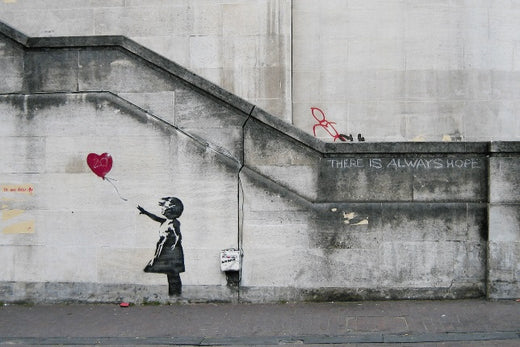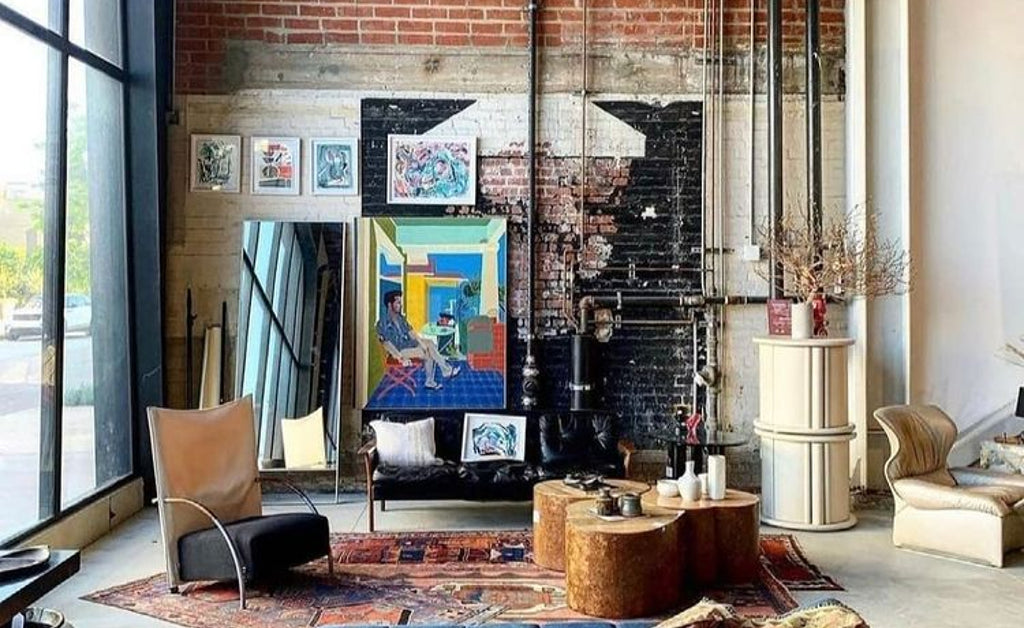
Street Art - How it all started with origin and culture

Street art is a form of art where the street acts as a studio, where the street is the workspace and the artwork’s exhibit. Street art can take the form of graffiti, sidewalk chalk, posters, sculptures, stickers, mannequin dolls, or whatever the street artist decides on. Everything is possible!
The applied street art can sometimes be so original, funny or beautiful, that the owners of the “workspace” end up being pleasantly surprised! It often happens that the owners of the wall on which the art is made find it so beautiful or humorous that they don't even think about removing it or reporting it to the police in the first place.

Street Art Using Graffiti
Street art made with the help of spray paint is different from "normal" graffiti. Street art goes far beyond carelessly applied names on a corridor on the wall of a drab viaduct. Although street art is often prohibited by law in most countries, it is often greatly appreciated by the people who appreciate the art form or what the piece might symbolize.
A piece of quality street art is sometimes perceived as a legitimate expression of artistry instead of the usual vandalism that common perception might dictate. Street art with graffiti can, for example, brighten up a building, a wall or a garage door, ultimately becoming a pleasant addition to a property – much to the owner’s delight.
Of course, the artist does run the risk of being caught by police, never sure how his art would be perceived by the owner or any passersby. For this reason, among a whole host of legal and cultural concerns, street art is still a very controversial art form – probably for years to come.
Street Art Using Sidewalk Chalk - Edgar Mueller Style
Edgar Mueller is a true legend in the world of street art, creating works of art on the ground using chalk that appear three-dimensional. This style of art is called anamorphic painting, which in Mueller’s case is called anamorph sidewalk chalk.
An anamorph piece is incredibly difficult to create, because the artist can't quite see what it looks like from a distance while making it. The artist has to keep checking his art from the right perspective, where the three-dimensional effect can be clearly seen.
Once such a piece is finished, it is possible for passersby to have their picture taken while appearing to, for example, walk a tightrope above a waterfall, feed a shark, or balance on the edge of a ravine. This makes for beautiful and often hilarious pictures!
Street Art as a Subculture
Street art has now become one of the largest underground subcultures, probably because of its accessibility to people of all walks of life. Whereas in the 1960s graffiti were chiefly influenced by the hiphop scene, street art in the 1970s also began attracting audiences and artists from the punk rock demographic. As time went by, the music you listened to became less and less important – political influences and artistic creativity taking a more prominent role in the art form.
Today, the street art subculture includes idealistic teenagers, art school students and even graphic designers. Your age, music tastes, even your political views don’t matter anymore – as long as you’ve got the same urge for expression street artists nowadays have (and if you take pleasure in the rush you get from creating pieces in not-so-legal places), you can participate, too!

Street Art - Still Controversial
Opponents
The unsolicited display of art on the street is still illegal today. What one person sees as beautiful or humorous art, another may see as an unseemly form of vandalism. "If everyone just gets going with a spray can, it's going to be a mess!" is a common argument from those who push back against the art form.
Proponents
The proponents of street art do not agree that the right to determine what “art” is in the public space is reserved solely for the government. A common argument is the skill and unrestricted creativity street art offers: making for a diverse and interesting visual experience on your boring old commute. They see it as a way to express creativity – a means through which artists can let loose and say whatever they want to say through their work.
Supporters of street art hate the drab concrete walls that so often surround us; concrete this, concrete that, and according to them it just begs to be brightened up. Despite the fact that they are working illegally, they themselves do not feel that they are doing anything wrong.
Prognosis: Street Art Legality
Although street art is by far one of the most popular and influential art forms today, it doesn’t look like it will ever be legalized by the vast majority of countries for the time being. However, proponents can take heart in the positive signs that can be seen today: for example, consider the Saunaman, a naked mannequin with a towel wrapped around him. This illegal piece of art was placed in the freezing installation of the North-South line in Amsterdam illegally.
Although the piece was initially removed, the sculpture was eventually sold at auction. The next day, it was back in place! Finally, in 2011, the sculpture ended up on the grounds of a sauna in Heerhugowaard, which goes to show how street art is still very much appreciated. Wondering where you can buy street art?
Here's a modern art related content: Basic Ideas to Level Up Your Walls with a New Look





